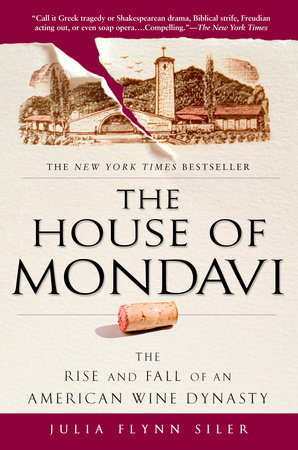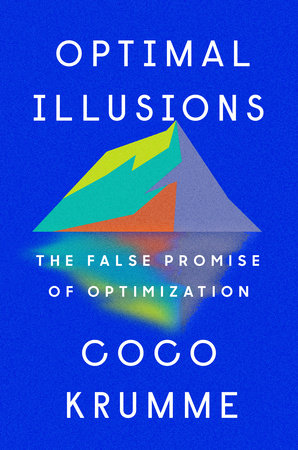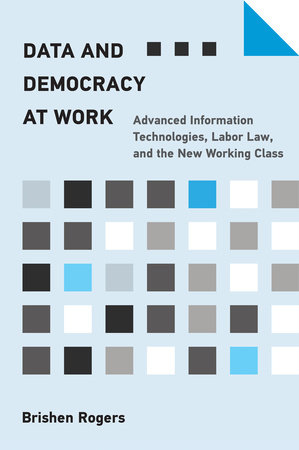Quick Summary
One Sentence Summary
“The House of Mondavi” by Julia Flynn Siler is a compelling narrative chronicling the rise and fall of the Mondavi family, a dynasty that shaped America’s wine industry.
Big Idea
The book delves into the complex dynamics of family, business, and legacy within the context of the Mondavi family’s influence on Napa Valley’s transformation into a renowned winemaking region.
Five Key Ideas
- Patriarchal Legacy: The book begins by exploring the foundational role of Cesare and Robert Mondavi in establishing the family’s wine empire.
- Family Feud: It delves into the internal conflicts and rivalries, especially between Robert and his brother Peter, that ultimately led to a division in the family business.
- Innovation and Risk: The narrative highlights Robert Mondavi’s innovative approaches to winemaking and marketing, which were both risky and groundbreaking.
- Corporate Challenges: The book discusses the challenges faced by the Mondavi business as it grew, including financial struggles and the pressures of staying competitive.
- Legacy and Loss: Finally, it covers the sale of the Mondavi corporation and reflects on the implications for the family legacy and the wine industry.
Actionable Advice
Understand that in family businesses, emotional dynamics can deeply influence professional decisions; separating personal issues from business matters is crucial for long-term success.
About the Author
Julia Flynn Siler is an accomplished journalist and author, known for her in-depth research and engaging storytelling. Her works often focus on historical narratives and family sagas.
Read Next
For readers interested in similar themes, consider “The Billionaire’s Vinegar” by Benjamin Wallace for another gripping story in the wine world, or “Dynasties: Fortunes and Misfortunes of the World’s Great Family Businesses” by David Landes for a broader look at family enterprises.
In Depth
Patriarchal Legacy
The Mondavi story begins with Cesare Mondavi, an Italian immigrant who planted the seeds of a wine empire. Cesare’s hard work and vision set the stage for his son, Robert Mondavi, to revolutionize the Napa Valley wine industry. The book details Cesare’s journey from Italy to America, highlighting his initial struggles and eventual success in the grape business. This section paints a picture of a man determined to achieve the American dream, laying a foundation for future generations.
Robert Mondavi, Cesare’s son, emerges as a central figure in this narrative. His ambition and innovative spirit are evident from the start. Robert’s contributions to the wine industry were groundbreaking. He introduced techniques like cold fermentation and aging wine in French oak barrels. These practices, now common, were revolutionary at the time. His focus on quality and branding changed the way American wines were perceived globally.
One detailed example from the book is the famous rift between Robert and his brother Peter. This conflict stemmed from differences in vision and management style. Robert was a risk-taker, always pushing for innovation, while Peter was more conservative. Their disagreement reached a climax when, during a heated argument, Robert famously threw a punch at Peter. This incident, marking the end of their professional relationship, had profound implications for the family business.
Julia Flynn Siler captures this moment vividly:
“In a fit of rage that had been building for years, Robert swung at his brother. It was the blow that broke the family apart.”
As a reader, I found this moment to be a powerful illustration of how personal conflicts can escalate and impact an entire business. It’s a reminder that in family-run businesses, emotions can often intertwine with professional decisions, sometimes with dramatic consequences.
Reflecting on my experiences, I’ve seen how family dynamics can shape a business’s culture and decision-making. In a small family business I worked with, a disagreement between siblings led to a split, affecting not only the family but also the employees and the company’s future. The Mondavi story resonates because it underscores the complexities and challenges of mixing family and business.
Robert’s quest to build a wine empire despite these challenges is inspiring. His dedication to quality and innovation left an indelible mark on the wine industry. However, the book also serves as a cautionary tale about the fragility of family bonds in the face of business pressures. The Mondavi story, starting with Cesare’s immigrant journey and culminating in a family rift, is a poignant reminder of the delicate balance between maintaining family harmony and pursuing ambitious business goals.
Family Feud
The Mondavi saga isn’t just a business story; it’s a tale of a family torn apart. The rift between brothers Robert and Peter Mondavi is central to this drama. Their feud, stemming from differences in vision and personality, escalated to a point of no return, affecting the entire family and business.
Julia Flynn Siler provides a vivid portrayal of this internal conflict. The tension reached a boiling point during a board meeting, where disagreements about the company’s direction led to heated arguments. This wasn’t just a clash of ideas; it was a clash of bloodlines.
The author captures the intensity of these moments:
“As voices raised and tempers flared, the boardroom became a battlefield, with the Mondavi family legacy hanging in the balance.”
One detailed example illustrating the depth of this family feud involves the decision-making process within the company. Robert, known for his innovative and risk-taking approach, often found himself at odds with Peter, who favored a more conservative path. These clashes weren’t just about business strategies; they were deeply personal. Family gatherings turned into tense affairs, and what was once a united family began to fracture under the weight of these disagreements.
As someone who has witnessed similar family dynamics in a business setting, this story resonates. I’ve seen how differing visions can create rifts, not just in the boardroom but at the dinner table as well. The Mondavi story is a stark reminder of how the mixing of family and business can lead to conflicts that are hard to resolve.
The family feud didn’t just affect Robert and Peter; it trickled down to the next generation as well. The book touches on how their children got caught in the crossfire, often having to choose sides. This generational impact is a crucial aspect of the story, illustrating how business conflicts can leave lasting scars on family relationships.
The division between Robert and Peter eventually led to a split, with Robert establishing his own winery. This move marked a new chapter in the Mondavi story, but it also cemented the divide within the family. The author uses this turning point to reflect on the broader implications of such a split, not just for the Mondavi family but for family businesses in general.
The story of the Mondavi family feud is a compelling reminder of the delicate balance needed to navigate family relationships in a business context. It’s a cautionary tale about how personal disagreements, if not managed carefully, can escalate and lead to lasting divisions. The Mondavi narrative, with its complex mix of ambition, rivalry, and family bonds, offers valuable insights into the challenges and potential pitfalls of running a family business.
Innovation and Risk
The Mondavi story is also one of innovation and risk. Robert Mondavi was not just a winemaker; he was a visionary who transformed the industry. His willingness to experiment and take bold steps set a new standard in winemaking and marketing.
One striking example of Robert’s innovative spirit was his approach to promoting California wines. He was among the first to recognize the potential of Napa Valley as a world-class wine-producing region. To achieve this, he focused on quality, branding, and most importantly, changing the perception of American wines globally.
Julia Flynn Siler captures this ambition perfectly:
“Robert Mondavi didn’t just make wine; he was on a mission to place Napa Valley on the global map, competing with the best in the world.”
Robert introduced methods like cold fermentation and aging in French oak barrels, which were unconventional in California at the time. He understood that to compete with European wines, he needed to innovate. These techniques are now standard in the industry, but back then, they were a gamble.
As someone who has worked in industries where innovation is key, I see parallels in Robert’s approach. Innovation often involves risk, and not every stakeholder is ready to embrace change. Robert’s story demonstrates the importance of vision and courage in driving progress.
Robert’s risk-taking extended beyond winemaking. He was a pioneer in wine tourism, transforming his winery into a destination. He understood that creating an experience around wine tasting could attract visitors and build a brand. This concept was revolutionary at the time and has since become a staple in the industry.
The book delves into the challenges Robert faced with these innovations. Not everyone was on board with his ideas. The resistance he encountered, both within his family and from industry peers, added to the drama of his journey.
Robert’s push for innovation wasn’t just about techniques and marketing; it was about changing mindsets. He faced skepticism and criticism, yet he persisted. This resilience in the face of adversity is a powerful lesson from the Mondavi story.
The narrative of innovation and risk in “The House of Mondavi” is a compelling one. It shows how one person’s vision can change an industry. Robert Mondavi’s story is inspiring, not just for those in the wine business but for anyone who understands the value of innovation and the courage it takes to challenge the status quo. His legacy is a testament to the impact that one visionary can have, and his journey serves as a blueprint for transforming a sector through innovation and calculated risk.
Corporate Challenges
As the Mondavi business expanded, it faced a myriad of corporate challenges. The journey from a family-owned enterprise to a publicly-traded company was fraught with obstacles. Managing growth, financial struggles, and competition were just some of the hurdles the Mondavi family had to navigate.
A detailed example of these challenges is the company’s public offering. Going public was a significant step for Mondavi. It brought in capital but also added pressure for short-term results. This shift marked a transition from a family-run ethos to a corporate mindset, introducing a new set of dynamics.
Julia Flynn Siler succinctly describes this transition:
“The Mondavi’s move to go public was like opening Pandora’s box. It brought in funds but also unleashed forces they couldn’t control.”
This quote resonates because it highlights a common dilemma in business growth. The need for capital can lead to decisions that fundamentally change a company’s culture and structure.
The book details how managing this growth was a challenge. As the company expanded, keeping the family’s values and vision intact became increasingly difficult. The pressures of competing in a global market, maintaining quality, and satisfying shareholders often clashed.
One particular challenge was navigating the financial aspects of growth. The need for continuous investment in technology, marketing, and expansion strained the company’s finances. This strain was compounded by the fluctuating nature of the wine industry, where a bad harvest could impact revenues.
In my experience, managing growth in a business requires a delicate balance. You need to expand but also maintain the essence of what made the company successful in the first place. The Mondavi story is a stark reminder of the complexities involved in scaling a business.
The book also touches on internal challenges, such as disagreements on the direction of the company. These disagreements often stemmed from the different perspectives of family members and new corporate executives. Balancing these viewpoints was a constant struggle.
Another aspect of these corporate challenges was competition. As the wine industry grew, so did the number of competitors. The Mondavis had to continuously innovate to stay ahead. This competitive pressure, while a catalyst for innovation, also added to the stress of managing the company.
The narrative of corporate challenges in “The House of Mondavi” is a crucial part of the story. It provides insights into the realities of transitioning from a family business to a public entity. The struggles faced by the Mondavis are emblematic of the challenges many growing businesses encounter. Their story serves as a case study in managing growth, balancing stakeholder interests, and maintaining a vision amidst the complexities of the corporate world.
Legacy and Redemption
The final act of the Mondavi story revolves around legacy and redemption. Amidst the corporate challenges and family feuds, there emerges a poignant theme of seeking redemption and preserving a legacy. The Mondavis, particularly Robert, grappled with the consequences of their choices and their impact on the family’s legacy.
A detailed example of this quest for redemption is Robert Mondavi’s efforts in his later years to reconcile with his brother Peter. After decades of animosity, Robert reached out, seeking to mend their fractured relationship. This gesture was more than a personal reconciliation; it was an attempt to heal a divided family and secure a united legacy.
Julia Flynn Siler captures this moment:
“In the twilight of his life, Robert Mondavi realized that wine, no matter how fine, couldn’t fill the void left by a broken family. His outreach to Peter was his way of coming full circle.”
This quote is powerful because it reflects a universal truth: success and achievements can feel hollow in the absence of meaningful relationships. It highlights the human side of business, where personal connections often outweigh professional accomplishments.
Robert’s initiative to reconcile was not just about making amends with his brother; it was about setting an example for the next generation. He wanted to leave behind a legacy that wasn’t tainted by the bitterness of the past. This move towards reconciliation showed a sense of responsibility towards the family name and its standing in the industry.
In my experience, the concept of legacy is often a driving force in family businesses. The desire to pass on something of value to future generations can be a powerful motivator. Robert’s late realization and efforts to salvage the family legacy resonate with this sentiment.
The book also delves into how the younger Mondavis navigated the path laid by their predecessors. They faced the challenge of upholding the family’s reputation while carving their own identity in the industry. This intergenerational aspect of legacy is a crucial part of the narrative.
Redemption in the Mondavi story is not just about family reconciliation; it’s also about facing the consequences of past decisions and making efforts to rectify them. The story illustrates how, in the pursuit of success, relationships can be strained, and sometimes, it takes a lifetime to understand the value of those bonds.
The theme of legacy and redemption in “The House of Mondavi” adds depth to the story. It transforms it from a business saga into a human story about aspirations, regrets, and the desire for forgiveness. It highlights the complexities of family dynamics and the lasting impact of our choices. The Mondavi story, in its conclusion, offers a reflective look at what truly matters in the end — not just the wealth and success, but the relationships and the legacy we leave behind.
Actionable Advice
-
Embrace Innovation: Always be open to new ideas and methods. Innovation keeps businesses competitive and relevant.
-
Balance Family and Business: If running a family business, clearly define roles and boundaries. Communication and respect are key.
-
Manage Growth Wisely: Growth is good, but manage it carefully. Ensure it aligns with your core values and long-term vision.
-
Prepare for Succession: Plan for the future. Think about who will take over and how to preserve the business’s ethos.
-
Learn from Mistakes: Reflect on past errors. They are valuable lessons that can guide future decisions.
-
Prioritize Relationships: Business success shouldn’t come at the cost of personal relationships. Maintain and nurture them.
-
Seek Reconciliation: If conflicts arise, don’t let them fester. Seek resolution and reconciliation, especially in family businesses.
-
Leave a Legacy: Consider what you want to leave behind. Make decisions that contribute to a lasting, positive legacy.
About the Author
Julia Flynn Siler is a renowned journalist and author. Her work has been featured in prestigious publications like The Wall Street Journal and The New York Times. Born in Illinois, she developed an early interest in storytelling. Siler holds a Master’s degree in Journalism from Northwestern University and an MBA from the University of London. Her writing career is marked by a deep commitment to in-depth reporting and vivid storytelling. Siler’s books, including “The House of Mondavi” and “The Lost Kingdom of Louie,” reflect her meticulous research and engaging narrative style. She is passionate about bringing hidden histories to light, often focusing on dramatic family sagas and underreported stories. Siler believes in the power of journalism to educate and inform, and she has a knack for making complex subjects accessible to a wide audience. Her work embodies her dedication to thorough research, clarity, and human-centered storytelling.
Read These Next
You might like these similar books
- “The Widow Clicquot: The Story of a Champagne Empire and the Woman Who Ruled It” by Tilar J. Mazzeo
- “The Billionaire’s Vinegar: The Mystery of the World’s Most Expensive Bottle of Wine” by Benjamin Wallace
- “Wine and War: The French, the Nazis, and the Battle for France’s Greatest Treasure” by Don and Petie Kladstrup
- “Judgment of Paris: California vs. France and the Historic 1976 Paris Tasting That Revolutionized Wine” by George M. Taber
- “The Emperor of Wine: The Rise of Robert M. Parker, Jr., and the Reign of American Taste” by Elin McCoy
FAQ
Q: What is “The House of Mondavi” about?
A: It’s the story of the rise and fall of the Mondavi family’s wine empire in Napa Valley.
Q: Who is the author of the book?
A: Julia Flynn Siler wrote “The House of Mondavi.”
Q: Is the book based on true events?
A: Yes, it’s a non-fiction account based on real events and people.
Q: What themes does the book explore?
A: It delves into themes of family dynamics, business challenges, innovation, and legacy.
Q: Who would enjoy reading this book?
A: Fans of biographies, wine enthusiasts, and those interested in family businesses and entrepreneurship.
Q: How long is the book?
A: The book has a length of approximately 450 pages.
Q: Does it require prior knowledge about wine or the wine industry?
A: No, it’s written for a general audience with detailed explanations.







